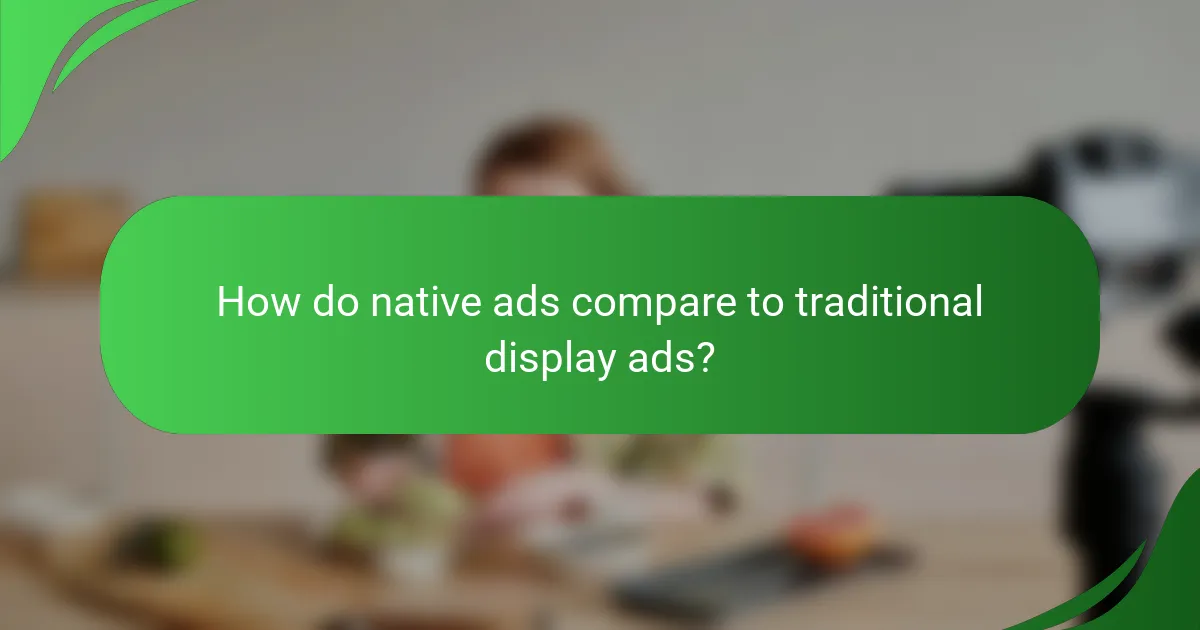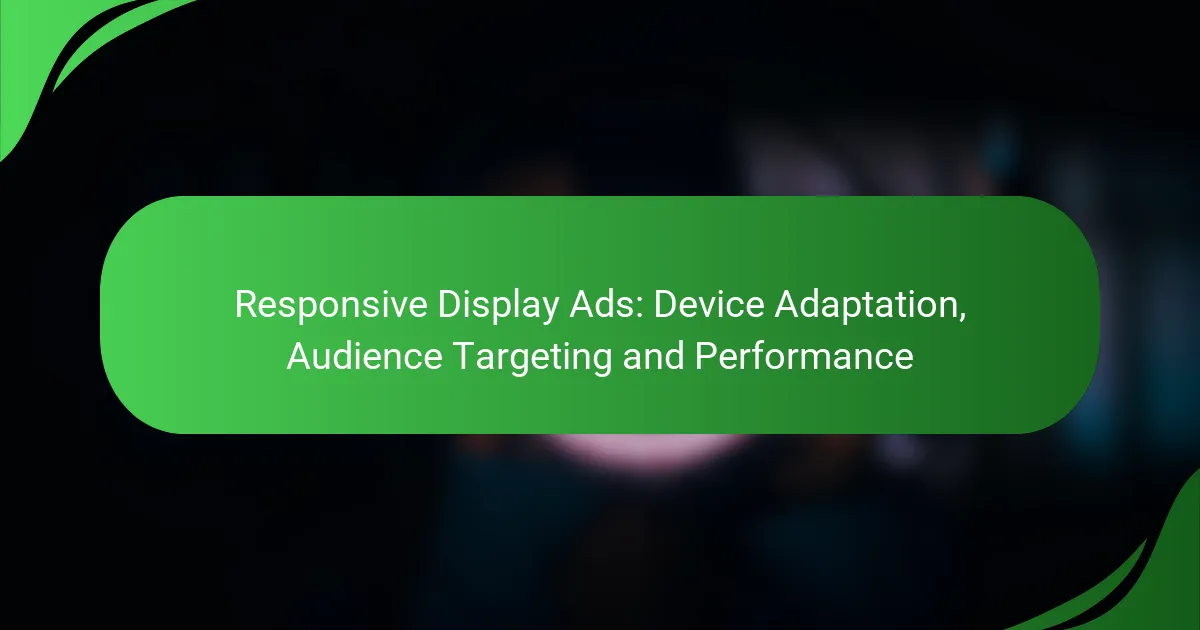Native advertising offers a unique approach to enhance user experience by seamlessly integrating promotional content with the surrounding material, making it less intrusive and more engaging. This strategy not only fosters a more enjoyable browsing experience but also ensures that the ads align with the brand’s identity and resonate with the target audience, ultimately driving better interaction and engagement.

How do native ads enhance user experience in Australia?
Native ads improve user experience in Australia by blending seamlessly with the surrounding content, making them less intrusive and more engaging. This integration fosters a more enjoyable browsing experience, encouraging users to interact with the ads rather than ignore them.
Seamless integration with content
Native ads are designed to match the look and feel of the platform they appear on, whether it’s a news site, social media, or a blog. This alignment with existing content helps users perceive the ads as part of their overall experience, reducing the likelihood of ad blindness.
For example, a sponsored article on a lifestyle blog may feature similar visuals and writing styles as the site’s regular posts, making it more appealing to readers. This approach not only enhances user satisfaction but also builds trust in the brand being advertised.
Reduced ad fatigue
By presenting ads in a non-disruptive manner, native advertising helps mitigate ad fatigue, a common issue where users become desensitized to traditional banner ads. When ads are integrated into the content, they are less likely to be perceived as interruptions.
In Australia, where users are increasingly selective about the content they engage with, native ads can maintain interest and relevance. Brands should focus on creating high-quality, informative content that resonates with their target audience to further reduce fatigue.
Improved engagement metrics
Native ads typically yield higher engagement rates compared to traditional ads. This is due to their contextual relevance and the way they blend with the content, encouraging users to click through and interact.
In Australia, metrics such as click-through rates and time spent on content can significantly improve with well-executed native advertising. Brands should monitor these metrics closely to assess the effectiveness of their campaigns and adjust their strategies accordingly.

What are the best practices for brand alignment in native advertising?
Brand alignment in native advertising involves ensuring that the content resonates with the brand’s identity while appealing to the target audience. Key practices include maintaining consistent messaging, segmenting audiences effectively, and incorporating local cultural references.
Consistent brand messaging
Consistent brand messaging is crucial for native advertising as it reinforces brand identity across various platforms. This means using the same tone, style, and key messages that reflect the brand’s values and mission.
To achieve this, create a brand guideline that outlines messaging principles and visual elements. Regularly review content to ensure it aligns with these guidelines, avoiding mixed messages that could confuse the audience.
Targeted audience segmentation
Targeted audience segmentation allows brands to tailor their native ads to specific demographics, interests, and behaviors. This practice enhances relevance and engagement, leading to higher conversion rates.
Utilize data analytics to identify audience segments and create customized content that speaks directly to their needs. Consider factors such as age, location, and purchasing behavior to refine your targeting strategy.
Utilizing local cultural references
Incorporating local cultural references in native advertising can significantly enhance relatability and connection with the audience. This practice shows that the brand understands and respects the local culture, which can foster trust and loyalty.
Research local customs, language nuances, and trending topics to create content that resonates with the specific audience. For example, using local idioms or referencing popular events can make the ad feel more authentic and engaging.

What tools can optimize native ad performance?
To optimize native ad performance, marketers can leverage various tools that enhance visibility, targeting, and engagement. These tools help ensure that ads are seamlessly integrated into content, improving user experience while aligning with brand goals.
Taboola for content discovery
Taboola is a powerful platform for content discovery that helps brands reach new audiences through personalized recommendations. By analyzing user behavior and preferences, Taboola serves ads that blend with editorial content, increasing the likelihood of engagement.
When using Taboola, consider setting clear goals for your campaigns, such as increasing website traffic or boosting brand awareness. Regularly monitor performance metrics like click-through rates (CTR) and adjust your strategy based on what resonates with your audience.
Outbrain for audience targeting
Outbrain specializes in audience targeting, allowing brands to deliver native ads to specific demographics and interests. This precision helps ensure that ads are seen by users who are more likely to engage with the content, enhancing overall campaign effectiveness.
Utilize Outbrain’s targeting options, such as contextual targeting and retargeting, to maximize your ad’s reach. It’s essential to test different audience segments and analyze performance data to refine your targeting strategy continually.
Google Ads for native campaigns
Google Ads offers a robust platform for running native ad campaigns across various Google properties and partner sites. With its extensive reach and advanced targeting capabilities, advertisers can create ads that blend seamlessly with the surrounding content.
When setting up native campaigns in Google Ads, focus on crafting compelling ad creatives that align with your brand’s messaging. Regularly review campaign performance and adjust bids and targeting settings to optimize results, ensuring you stay within your budget while maximizing ROI.

What metrics are essential for measuring native ad success?
Essential metrics for measuring native ad success include click-through rates, conversion rates, and brand lift studies. These metrics provide insights into user engagement, the effectiveness of the ad in driving actions, and the overall impact on brand perception.
Click-through rates
Click-through rates (CTR) indicate how often users click on a native ad compared to how many times it is displayed. A higher CTR suggests that the ad is engaging and relevant to the audience. Typically, a good CTR for native ads ranges from 0.5% to 2%, but this can vary based on the industry and target demographics.
To improve CTR, focus on creating compelling headlines and visuals that resonate with your audience. A/B testing different ad formats and placements can also help identify what works best.
Conversion rates
Conversion rates measure the percentage of users who take a desired action after clicking on a native ad, such as making a purchase or signing up for a newsletter. A strong conversion rate indicates that the ad not only attracted clicks but also effectively persuaded users to act. Typical conversion rates for native ads can range from 1% to 5%, depending on the offer and audience targeting.
To enhance conversion rates, ensure that the landing page aligns with the ad’s messaging and provides a seamless user experience. Clear calls to action and optimized page load times are crucial for maximizing conversions.
Brand lift studies
Brand lift studies assess the impact of native ads on brand perception, awareness, and purchase intent. These studies typically involve surveys before and after the ad campaign to measure changes in consumer attitudes. An effective brand lift study can reveal how well the native ad has resonated with the target audience and whether it has positively influenced brand metrics.
When conducting brand lift studies, consider using control groups to compare results accurately. This method helps isolate the effects of the native ad from other marketing efforts, providing clearer insights into its effectiveness.

How do native ads compare to traditional display ads?
Native ads differ from traditional display ads primarily in their format and user experience. While display ads often disrupt the browsing flow, native ads blend seamlessly with the surrounding content, leading to a more integrated and engaging experience for users.
Higher engagement rates
Native ads typically achieve higher engagement rates compared to traditional display ads. This is largely due to their contextual relevance and design, which allows them to resonate more with the audience. For instance, a sponsored article on a news site can attract more clicks than a banner ad, as it provides value and aligns with the reader’s interests.
Studies suggest that engagement with native ads can be significantly higher, often exceeding traditional ads by a substantial margin. Advertisers should focus on creating content that is informative and entertaining to maximize engagement.
Less intrusive user experience
Native ads offer a less intrusive user experience, as they are designed to match the look and feel of the platform on which they appear. This integration minimizes disruption, allowing users to consume content without feeling interrupted by overt advertising. For example, a video ad that appears within a social media feed feels more like part of the content than a separate advertisement.
To enhance user experience, brands should ensure that their native ads are relevant and provide value. Avoiding overly promotional language can help maintain a positive perception among users.
Better brand recall
Native ads often lead to better brand recall than traditional display ads. This is because they engage users in a more meaningful way, creating a connection that enhances memory retention. When users encounter ads that blend with content, they are more likely to remember the brand associated with that content.
To improve brand recall, advertisers should focus on storytelling and emotional connections in their native ads. Using consistent branding elements and clear messaging can further reinforce brand identity in the minds of consumers.



